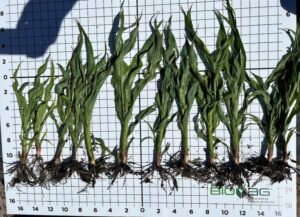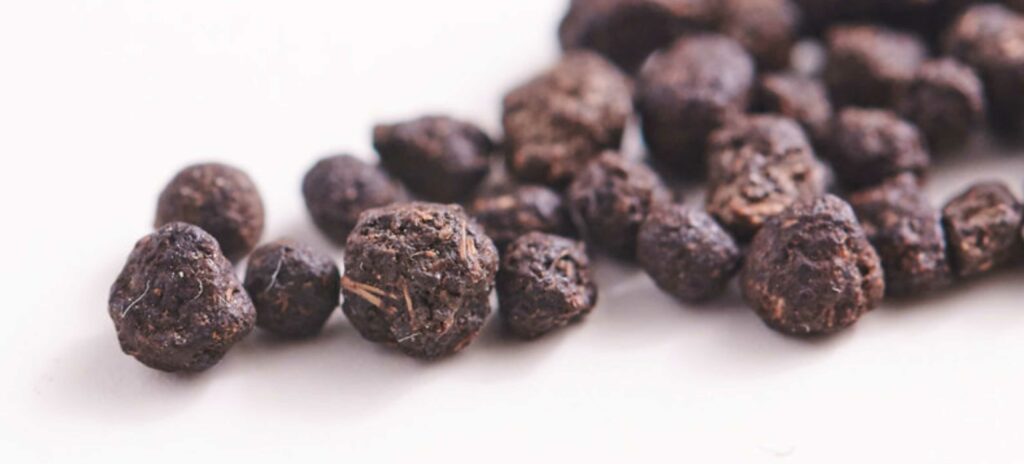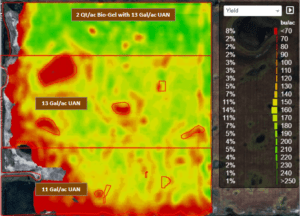TerraNu® and Bio-Gel® Fertilizers: Analyzing Their Impact on Sustainable Agriculture
Bio-Gel® and TerraNu® are two innovative technologies designed to enhance agricultural productivity by improving soil health, water retention, and nutrient efficiency. Bio-Gel is a carbohydrate-based hydrogel that absorbs and retains water, gradually releasing it to crops, thereby reducing irrigation needs and improving water-use efficiency. In addition to enhancing water retention, Bio-Gel locks in essential nutrients, preventing their leaching from the soil, and supports soil organic matter formation, fostering the growth of beneficial microorganisms that enhance soil structure, fertility, and nutrient cycling.
TerraNu, a carbon complexation technology, optimizes fertilizer use efficiency by enhancing the mobility of key nutrients like phosphorus and potassium in the soil. By reducing nutrient immobilization and tie-ups, TerraNu ensures that applied fertilizers are more effectively utilized, maximizing their benefits to crops. TerraNu also supports nutrient cycling, reduces soil compaction, and increases soil organic carbon levels, contributing to improved soil structure, water retention, and long-term soil health.
Together, these technologies offer a comprehensive approach to sustainable farming, optimizing both water and nutrient management to improve crop productivity and promote long-term soil health.
North Dakota On-Site Trials
The trial site, located in northwestern North Dakota, was selected to evaluate the combined impact of TerraNu and Bio-Gel on crop yield. At this site, TerraNu High Performance (HiP) was applied across the entire field using a strip-till method at a rate of 70 pounds per acre, along with 60 pounds per acre of Sulfate of Potash and 90 pounds per acre of Anhydrous Ammonia. At planting, a tank mixture consisting of 2 quarts per acre of Bio-Gel RootSurge and 3.5 gallons per acre of a 7-25-3 liquid fertilizer was applied. Additionally, Urea Ammonium Nitrate (UAN) was applied at a rate of 13 gallons per acre in two-thirds of the field and at 11 gallons per acre in the southern third.
Best Practices for Research Success
 Soil and plant tissue samples were collected at each site following the established guidelines from Midwest Laboratories. Soil samples were analyzed using two methods: the natural ammonium acetate extraction (AAE) method and the saturated paste extraction (SPE) method. The SPE method, commonly employed in western North America, is particularly effective for assessing the short- to medium-term nutrient pool, while the AAE method provides insights into the long-term nutrient pool. By employing both sampling techniques, this study gained a comprehensive understanding of soil nutrient mobility and how these nutrients are assimilated by plants over different time scales.
Soil and plant tissue samples were collected at each site following the established guidelines from Midwest Laboratories. Soil samples were analyzed using two methods: the natural ammonium acetate extraction (AAE) method and the saturated paste extraction (SPE) method. The SPE method, commonly employed in western North America, is particularly effective for assessing the short- to medium-term nutrient pool, while the AAE method provides insights into the long-term nutrient pool. By employing both sampling techniques, this study gained a comprehensive understanding of soil nutrient mobility and how these nutrients are assimilated by plants over different time scales.
Significant Improvements on Corn Yields
The application of TerraNu High Performance (HiP) and Bio-Gel RootSurge resulted in significant improvements in corn yields. In the northern third of the experimental field, Bio-Gel RootSurge was applied in-furrow at planting, alongside 7-25-3 liquid fertilizer. Urea Ammonium Nitrate (UAN) was applied at a rate of 13 gallons per acre at sidedress. This treatment resulted in a 26% increase in corn yields, corresponding to an uplift of 41 bushels per acre compared to the grower standard practice, which involved 13 gallons of UAN per acre without Bio-Gel RootSurge.
In the southern two-thirds of the field, where 11 gallons of UAN per acre were applied at sidedress, corn yields increased by 35%, reflecting an uplift of 51 bushels per acre compared to the lower rate grower standard practice. This further emphasizes the role of TerraNu HiP in enhancing nutrient mobility and efficiency, even when a lower rate of nitrogen is applied. TerraNu HiP’s carbon-based formulation aids in the increased availability of key nutrients, such as nitrogen, phosphorus, and potassium, while minimizing nutrient loss due to leaching or immobilization. The water-retentive properties of Bio-Gel RootSurge also contributed to optimal nutrient uptake and overall soil health, supporting the observed yield improvements.
Key Findings and Insights
The combined application of TerraNu High Performance (HiP) and Bio-Gel RootSurge resulted in substantial improvements in corn yields, highlighting the effectiveness of this integrated approach in enhancing fertilizer use efficiency, soil health, and overall crop productivity. Overall, the approach increased yield potential by over 30 bushels per acre while reducing nitrogen application by 24 pounds per acre. These results emphasize the role of TerraNu HiP in enhancing nutrient availability and promoting more efficient nutrient cycling, even when lower rates of nitrogen are applied. TerraNu HiP’s carbon complexation technology optimizes the mobility of key nutrients like nitrogen, phosphorus, and potassium, making them more accessible to crops while minimizing nutrient loss due to leaching or immobilization. This technology not only improves soil fertility but also helps reduce the environmental impact of fertilizer application by improving nutrient retention in the soil.
In addition, Bio-Gel RootSurge played a crucial role in optimizing soil moisture retention, further boosting nutrient uptake and overall plant health. Bio-Gel’s water-holding properties improve soil structure and porosity, supporting the activity of beneficial soil microorganisms. By functioning as a primer for microbial carbon pumps in the soil, Bio-Gel RootSurge fosters an environment conducive to the growth and proliferation of these microorganisms, which are essential for nutrient cycling, soil organic matter formation, and long-term soil health.
Moreover, the synergistic application of TerraNu HiP and Bio-Gel RootSurge has demonstrated significant potential in improving crop resilience to abiotic stresses, such as drought, heat, and waterlogging. TerraNu HiP’s role in enhancing nutrient mobility, combined with Bio-Gel’s water retention capabilities, allows crops to better withstand periods of water scarcity or extreme weather events. These technologies contribute to improved climate resiliency by supporting crops in their ability to cope with environmental stresses, ensuring more stable yields in the face of fluctuating climatic conditions.
Together, TerraNu HiP and Bio-Gel RootSurge offer a comprehensive solution that not only increases crop productivity but also supports sustainable farming practices. TerraNu’s carbon-based technology enhances nutrient efficiency, while Bio-Gel’s role in improving water retention and facilitating microbial activity underscores the importance of a holistic approach to soil management. The combined benefits of these technologies contribute to a more resilient agricultural system, optimizing fertilizer use, enhancing climate resiliency, and promoting the long-term health of the soil. This integrated approach can be crucial in mitigating the effects of climate change and ensuring food security for future generations.


